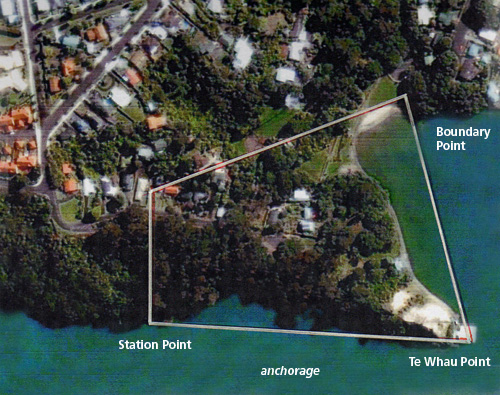Quarantine station at Blockhouse Point
Researched by Bill Glen
In the early 1860s the Government was concerned that, although immigrants were checked before boarding ship for New Zealand, some passengers took ill on the voyage. There was a risk of contagious diseases entering the country, putting the public at risk. On 12 January 1864 at Government House in Auckland, quarantine regulations were signed into law by Governor George Grey. These regulations required quarantine stations to be set up at main ports, and described the actions to be taken by ships’ masters, harbour boards and provincial governments, to protect the country from introduced diseases.






